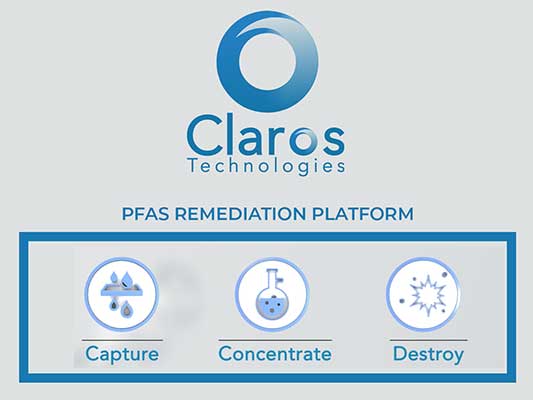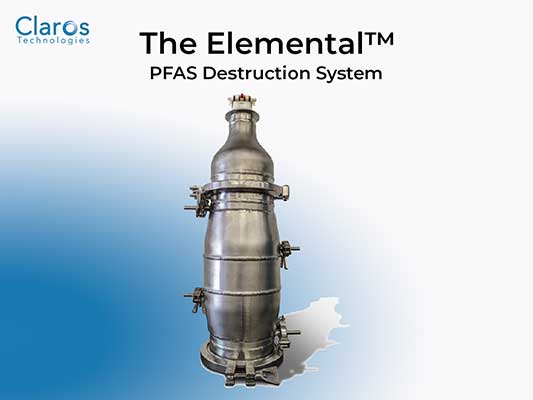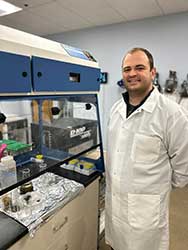Outdated wastewater treatment systems are kept out of fear of high improvement costs. But green technologies can conserve water and money.
The emergence of new regulations and the growing demand for clean water are pressuring industrial organizations to upgrade their wastewater treatment systems. Fortunately, it’s not the insurmountable challenge that wastewater treatment companies might worry it is. With the right combination of strategic changes and innovative resources, organizations can increase the efficiency and safety of their wastewater treatment systems, all while reducing costs.

Here are four widespread challenges to improving wastewater treatment accompanied by science-based solutions to help meet each one:
Energy consumption is perhaps the biggest issue with most wastewater treatment systems. In fact, the wastewater filtration process consumes between 3 to 4 percent of the entire nation’s electrical power every year. The high energy consumption of wastewater treatment results in high operational costs and leaves less funds available for other critical expenses.
Industrial facilities can reduce energy consumption by investing in greener treatment systems that require less electricity, heating, and physical space. For example, Yorkshire Water did this recently to great success. The organization had to build a new facility since erosion was beginning to threaten the old one. Yorkshire Water decided to use the opportunity to go green. The plant invested in a technology called AeroFac, which uses a combination of gentler biochemical processes and exposure to the sun’s UV rays to treat the water. In addition to being green, it’s also much cheaper to run the plant now. Yorkshire Water now benefits from a low carbon footprint and dramatic energy savings through the use of renewable energy.
At Claros Technologies, we help companies safely introduce their wastewater back into the environment by capturing and detoxifying harmful pollutants. In our experience, we’ve found that the need for an upgraded wastewater treatment system often stems from the heightened presence of exceptionally robust and complex contaminants. One example is a class of human-made chemicals known as PFAS, which stands for either perfluoroalkyl or polyfluoroalkyl substances. Found in everything from clothing to cookware to food packaging, PFAS make consumer goods more resistant to water, stains, and grease.
PFAS are also known as “forever chemicals” because they are extremely difficult to break down and destroy. However, companies like Claros have developed new technology capable of eliminating PFAS and other complex chemicals from wastewater. Our proprietary process, for instance, completely eliminates PFAS by breaking them down into their constituent elements.
Due to PFAS’ direct link with myriad serious health conditions, more than 6,400 PFAS-related lawsuits have been filed since 2005, the majority of which involve allegations of water contamination on behalf of large chemical companies. In response to these growing allegations, the U.S. Environmental Protection Agency recently unveiled a strategic roadmap to safeguard communities from PFAS contamination and hold polluters accountable.
Likewise, several U.S. states have even proposed or enacted regulations governing the presence of PFAS in industrial facilities. For this reason, organizations that produce PFAS in their wastewater have been vehemently advised to introduce PFAS destruction into production very soon to avoid burdensome fines and litigation.

As any wastewater organization well knows, the water filtration process used to make water non-toxic can have a real environmental impact. The organic matter that gets removed from the wastewater has to go somewhere. Without careful oversight, these chemicals will end up in local waterways right alongside the clean water that has been discharged.
While outdated systems have a tendency to leave behind their own collection of toxins, newer systems powered by green technology treat wastewater with eco-friendly processes. This ensures that wastewater is completely free of environmental pollutants once it’s discharged into local waterways. The elimination of residual chemicals will become even more important in the coming years as further environmental regulations emerge in order to make wastewater treatment as environmentally safe as possible.
Wastewater treatment is a complicated process that requires highly trained managers and workers. However, finding sufficiently qualified candidates for both roles is not easy, and inexperienced employees can lead to costly errors. We have also seen many organizations struggle to fill the sheer number of roles required to operate a treatment system.
This is another issue that can be solved by advanced filtration systems with a much lower need for human labor. Not only do these systems require fewer operators, but they require less maintenance over time as well. Organizations can also explore the possibility of automating certain recurring processes, which would increase efficiency even further while significantly reducing labor costs.
The wastewater treatment systems of the past have become an operational and financial liability for industrial organizations. If these companies neglect to upgrade their systems with new technology, they put their productivity in jeopardy while endangering the nation’s fresh water supply. Yes, system upgrades come with additional costs but the long-term rewards are certainly worth the price: increased efficiency, reduced operational expenses, and consistent regulatory compliance. Organizations must accept that big challenges require big solutions that benefit multiple parties, from staff members to consumers to our fragile planet.

Dr. John Brockgreitens is the Director of Research and Development for Claros Technologies, Inc. John leads market applications of closed-loop solutions for environmental toxins, such as PFAS and heavy metals, and advanced materials solutions for textiles. His accomplishments include nine publications, five patents, five scientific awards, and two federally funded grant programs. John was critical to agreements with the U.S. Navy and with a Japanese conglomerate to build PFAS-destruction systems. As a testament to his leadership in sustainable technologies and circular economies, John was recently selected to join the TechFounders International Accelerator Program based in Munich, Germany.
In this episode, I sat down with Beejan Giga, Director | Partner and Caleb Emerson, Senior Results Manager at Carpedia International. We discussed the insights behind their recent Industry Today article, “Thinking Three Moves Ahead” and together we explored how manufacturers can plan more strategically, align with their suppliers, and build the operational discipline needed to support intentional, sustainable growth. It was a conversation packed with practical perspectives on navigating a fast-changing industry landscape.